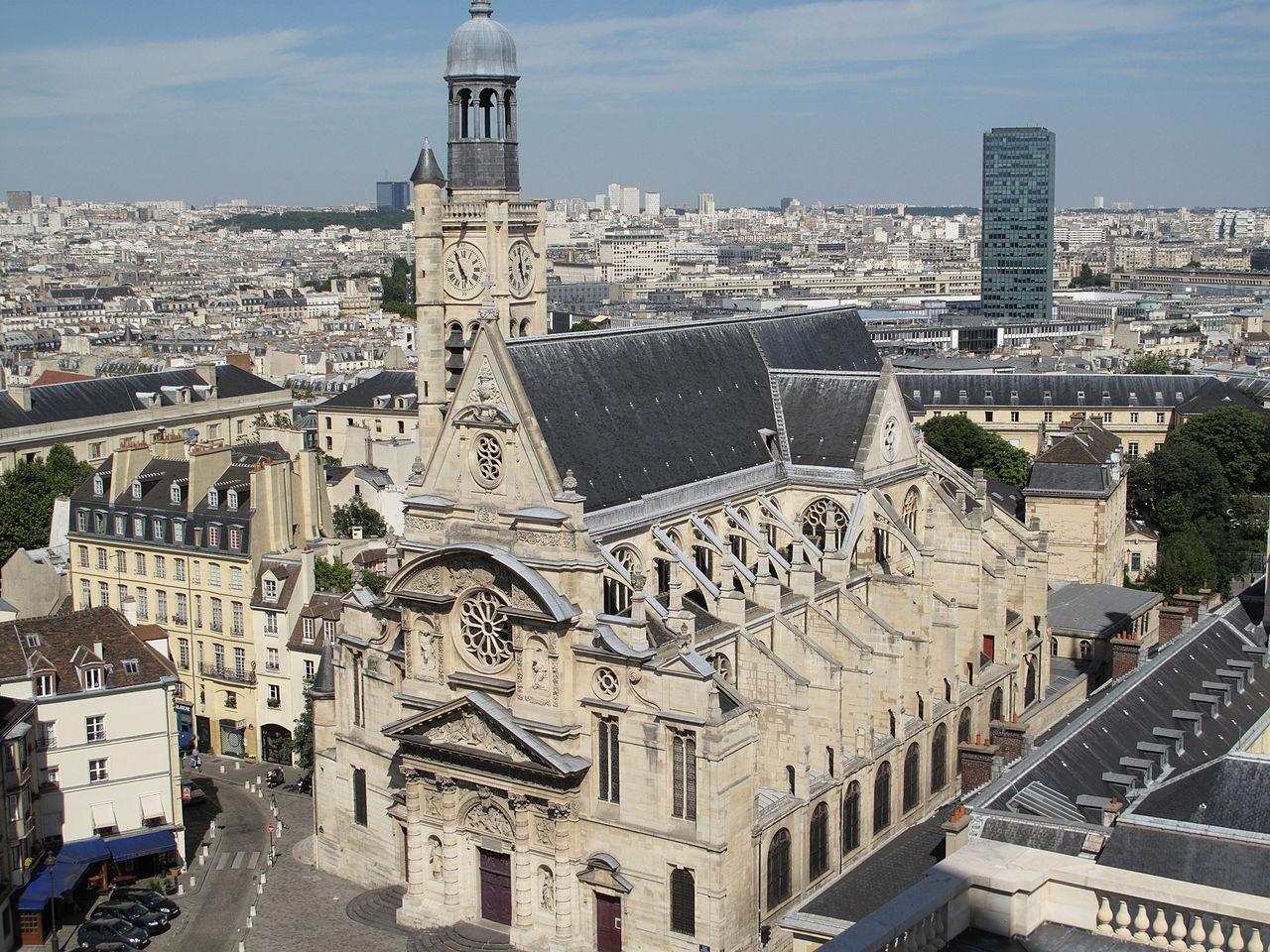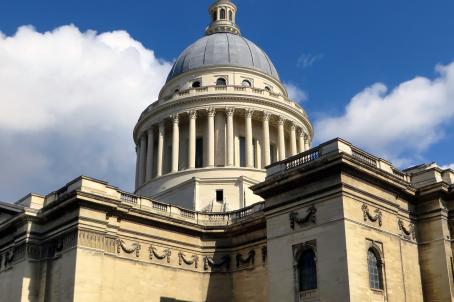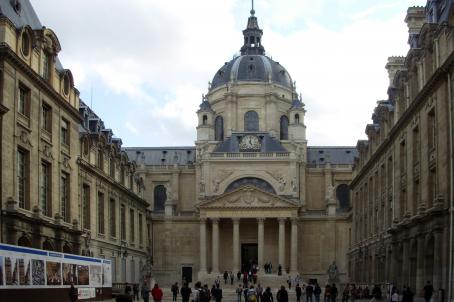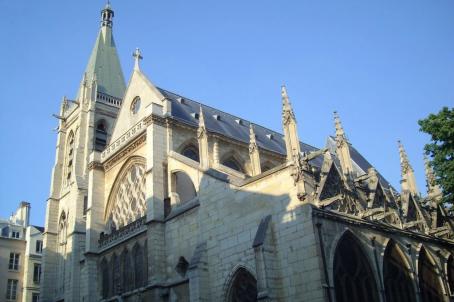Saint-Étienne-du-Mont Church
Saint-Étienne-du-Mont Church was built at the end of the 15th century on the site of a 13th-century church, but its rich Renaissance façade was not completed until 1624. Until the French Revolution, the church housed the relics of Sainte Geneviève, patron saint of Paris. The church also houses an organ from the 1630s.






